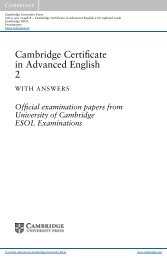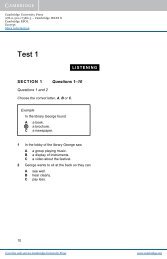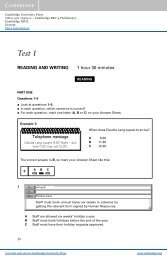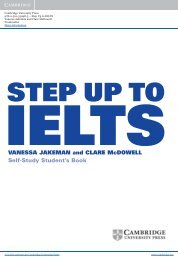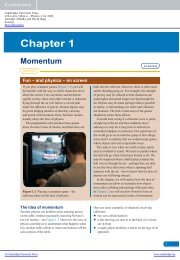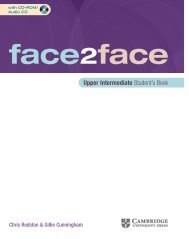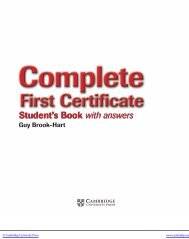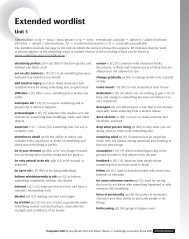Skills for Study Level 2 Teacher's Book - Cambridge University Press
Skills for Study Level 2 Teacher's Book - Cambridge University Press
Skills for Study Level 2 Teacher's Book - Cambridge University Press
Create successful ePaper yourself
Turn your PDF publications into a flip-book with our unique Google optimized e-Paper software.
Ancient RomeAncient Rome, Scribonius Largus (physician to the emperor Claudius) usedelectric charge from torpedo fish.19th CenturyElectrical stimulation continued to be used, though it eventually fell out offavour.Sniffing nitroglycerine fumes.Development of aspirin (acetylsalicylic acid) from bark of willow tree, but thiswas acidic and caused stomach upsets. In 1897, a German chemist (FelixHoffman) synthesized an improved version.20th CenturyDevelopment of other compounds – ibuprofen, paracetamol – which areeffective, though only in 1970 did scientists discover the mechanism by whichsuch compounds actually work in the body to reduce headache pain.2c Group discussion3 Following a description of a manufacturing process3a Group discussion3b Students predict the order of the steps.3.43cAnswers1 The ingredients are weighed separately.2 The ingredients are mixed and compressed.3 Air and lumps are removed from the compressed mixture by filtering.4 Lubricant is added to the mixture and blended gently together.5 The mixture is compressed into individual tablets.6 The tablets are tested <strong>for</strong> quality.7 The tablets are packaged on an assembly line.8 The tablets are labelled and a batch number and an expiry date are added tothe container.3d Students compare their answers.4 Following a description of a lab procedure4aAnswers1 test tubeA small glass tube, with one closed and rounded end, which is used in scientificexperiments2 acetyl chlorideA colourless acid chloride3 beakerA glass or plastic container used in chemistry4 salicylic acidA colourless organic acid; used <strong>for</strong> treating pain and fevers, and similar to acomponent of aspirin5 pyridineA colourless, highly flammable organic compound used as a solvent or chemicalreagentUnit 3 Part A ∙ Understanding spoken in<strong>for</strong>mation 77



